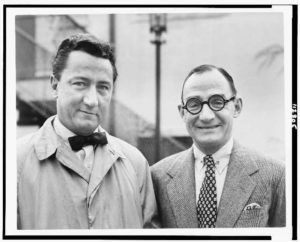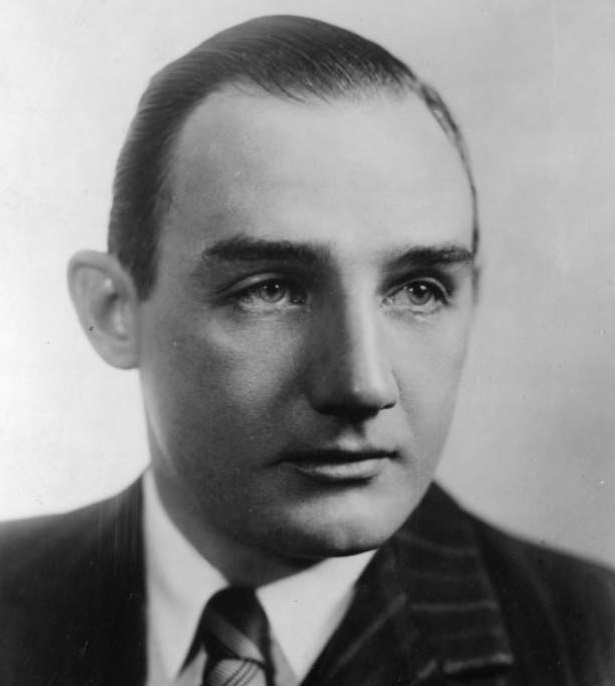By Emily Clark
Newspaper columnists have historically been known for their biased commentary, advice on current events, or reflections on their individual points of view. One writer, who produced what is believed to be the longest-running editorial column in the United States, took pride in creating pieces based on in-depth reporting in addition to opinionated comments. Though he traveled the world and became a leading figure in chronicling events of national politics, the life of renowned journalist Joseph Wright Alsop V began just west of Hartford, on a prosperous farm in Avon, Connecticut.
The son of Joseph Alsop and Corinne Robinson, this famous columnist was born in 1910 and grew up in relative wealth, graduating from the Groton School in Massachusetts and Harvard University. From a young age, he was introduced to politics as the great nephew of Teddy Roosevelt and distant cousin of FDR, piquing his interest in this career field and eventually leading to him becoming one of the country’s most well-known political journalists of the 20th century.
Volunteer Service and International Influence
Labeled as a “gloomy conservative,” a “doyen of Georgetown society,” and a “fierce foreign-policy hawk,” Alsop caused both controversy and concord among his contemporaries who included presidents, world leaders, Supreme Court justices, and influential mid-century journalists. It was his unwavering determination to provide his readers with the truth – at least as he saw it – prompting him to say in a 1974 interview, “I do have strong opinions, but I do try to give the customers value for money – which are the facts on which my opinions are based.”

Alsop Family (ca. 1941). Photo taken at the Wood Ford Farm at 27 Nod Road in Avon the weekend before Joseph Alsop left to serve in World War II. Left-right: John, Corrine, Stewart & Joseph. – Courtesy of Marian Hunter History Room, Avon Library, Avon CT
Alsop first started gathering those facts as a writer for the Harvard Crimson, followed by a position at New York’s Herald Tribune where, in 1936, he and fellow journalist Robert Kinter began writing a daily syndicated column. That was put on hold during the Second World War when Alsop became part of the American Volunteer Group (Flying Tigers). After being captured by the Japanese during a supply mission, he was imprisoned in Hong Kong but earned his freedom by portraying himself as a civilian journalist on assignment.
Once the war ended, Alsop resumed his journalism career, this time collaborating with his brother Stewart to write a column for the Tribune entitled “Matter of Fact” which garnered them national recognition in the early 1950s. Running several times a week in several hundred publications, the Alsop brothers’ writings exerted considerable influence around the country – and the world.
When Alsop traveled to the Philippines to cover elections there in 1953, it was not at the request of his syndicate but at the request of CIA officials, with whom he had a close relationship. According to author Evan Thomas, the CIA “asked Joe Alsop to write some columns warning the Filipinos not to steal the election from [Ramon] Magsaysay,” a candidate for president. Alsop agreed, though he seemed unsure of his impact on the statesman’s victory.
A Refusal to Be Blackmailed
A closeted gay man and a staunch critic of the Soviet Union, Alsop used his renown to thwart a blackmail set-up during a visit to the U.S.S.R. in 1957. After meeting a man who, unbeknownst to Alsop, was a KGB operative, the two rendezvoused in a Moscow hotel room where they were photographed by another agent in a compromising tryst.
When Soviets told the prominent columnist that they intended to circulate the incriminating photos among American journalists and politicians unless he agreed to spy for them, Alsop refused to be intimidated. Instead, he revealed the specifics of the incident – and his sexuality – to his associates in the CIA. When U.S. intelligence officials learned of the entrapment, they turned the tables on the Soviets, threatening them with blackmail information, which eventually took Alsop out of the one spotlight in which he never wished to be.

Stewart and Joseph Alsop (between 1945 and 1960) – Library of Congress, Prints and Photographs Division
As a critic of Joseph McCarthy and the “Red Scare” and as a proponent of the war in Vietnam, Alsop never wavered from his forceful opinions, calling his columns “largely reportial.” With connections to the highest of Washington’s elite in the 1960s, Alsop became a confidant of John F. Kennedy and a critic of Adlai Stevenson. Even his own brother, with whom he worked for years before their partnership dissolved, labeled him “egregious, a genius … and like most geniuses hard to work with. He seemed to feel a psychic need for at least one shouting, foot-stamping row each week.”
Though his work as a commentator took many forms over the course of his career, Alsop’s columns ran for a half century, documenting the lives, the scandals, the society, and the dealings of prominent politicians and public figures, all to bring to his readers “the facts on which my opinions are based.” Robert W. Merry, in his book Taking on the World: Joseph and Stewart Alsop, Guardians of the American Century, describes how the writings of these men, specifically older brother Joseph, mirrored the events of mid-20th century America. “Within the lifetime of the Alsop brothers the country was remade,” Merry writes. “And its remaking illuminates their careers, just as their careers illuminate the American Century.”
Later Writings
Late in his career, Alsop wrote for the Washington Post and the Los Angeles Times, retiring in 1974, though he continued writing up until his death in 1989. His memoir I’ve Seen the Best of It was published posthumously three years later. He is buried in Middletown, Connecticut, only 25 miles from his birthplace in Avon. Despite his international renown and both famous and infamous reputation, he remained a Connecticut Yankee at heart.
“To this day,” he wrote in his seventies, “my idea of heaven is to dress in my best garments for a wedding, sit at a table of pleasant friends, and drink champagne in an apple orchard under a New England June sun.”
Emily Clark is a freelance writer and an English and Journalism teacher at Amity Regional High School in Woodbridge.









